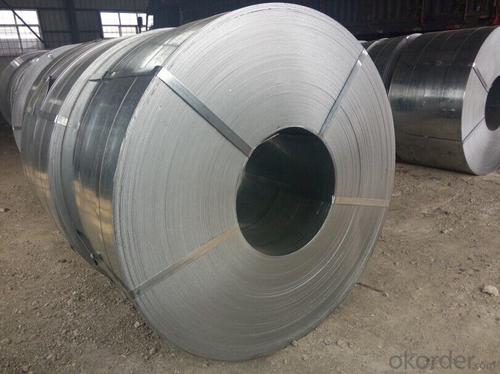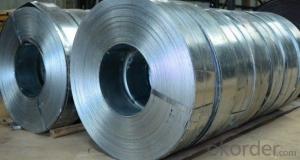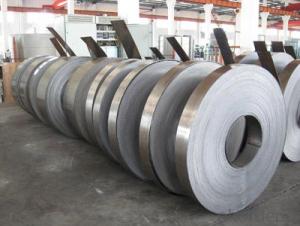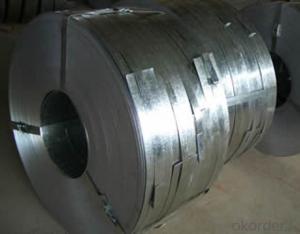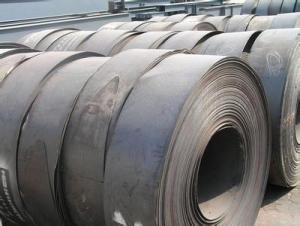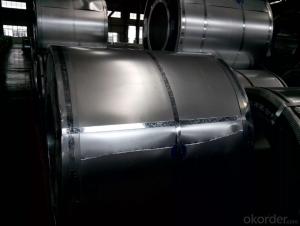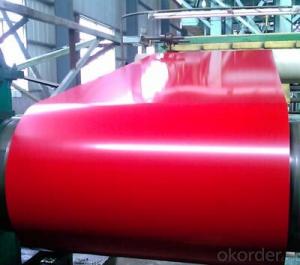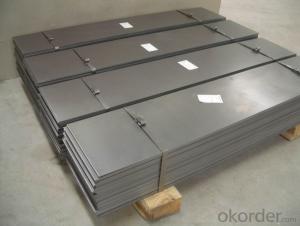Galvanized Steel Strip with High Quality-SGC340 600*2.5mm
- Loading Port:
- China main port
- Payment Terms:
- TT OR LC
- Min Order Qty:
- 50 m.t
- Supply Capability:
- 10000 m.t/month
OKorder Service Pledge
OKorder Financial Service
You Might Also Like
Galvanized Steel Strip with High Quality-SGC340 600*2.5mm:
Product Description:
Specifications:
1. Thickness: 2.5mm
2. Width: 600mm
3. Material: SGC340
4. ID: 508mm or 610mm
5. Spangle: Regular spangle or zero spangle
6. Surface treatment: chromated or no chromated; oiled or no oiled.
Advantages of Galvanized Steel Strip with High Quality-SGC340 600*2.5mm:
1. Uniform coating;
2. Strong adhesion;
3. Strong corrosion resistant ability
Usage of Galvanized Steel Strip with High Quality-SGC340 600*2.5mm:
1. Making pipes, like Greenhouse tubes, drinking water pipe, heating pipe, gas pipe and so on;
2. Used in automobile;
3. Used in construction;
4. Used in agriculture, fishery and so on.
FAQ of Galvanized Steel Strip with High Quality-SGC340 600*2.5mm:
Q1: How soon can we receive the product after purchasement?
A1: Within three days of placing an order, we will begin production. The specific shipping date is dependent upon international and government factors, but is typically one month-two months.
Q2: How do you guarantee the quality of our products?
A2: We have established an advanced quality management system which conducts strict quality tests at every step, from raw materials to the final product. At the same time, we provide extensive follow-up service assurances as required.
Q3: The prices are invoicing on theoritical weight or on actual weight?
A3: We can do it in both manners, according to the customers' request.
Images of Galvanized Steel Strip with High Quality-SGC340 600*2.5mm:

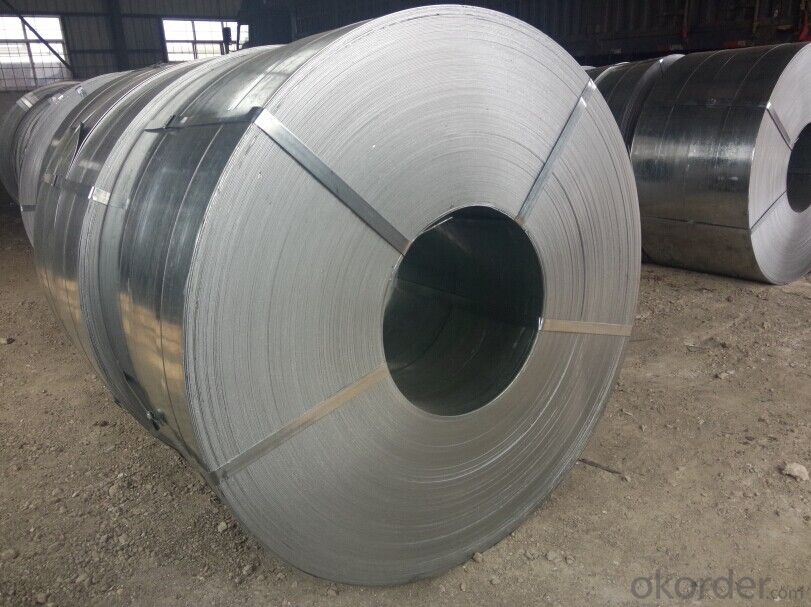
*If you would like to get our price, please kindly inform us the standard/material, specifications and quantity. Thank you very much for your attention.
- Q: What are the different alloys used in steel strips?
- There are several different alloys that are commonly used in steel strips to enhance their properties and meet specific application requirements. Some of the most common alloys used in steel strips include: 1. Carbon Steel: This is the most common type of alloy used in steel strips. It contains varying levels of carbon, which increases its strength and hardness. Carbon steel strips are used in a wide range of applications, from construction to automotive manufacturing. 2. Stainless Steel: Stainless steel strips are alloyed with chromium and sometimes nickel. This alloy gives the steel excellent corrosion resistance and makes it highly durable. Stainless steel strips are widely used in industries such as food processing, chemical, and medical. 3. Silicon Steel: Silicon steel strips are alloyed with silicon to improve their magnetic properties. These strips are used in the manufacturing of electrical transformers, motors, and generators. 4. Galvanized Steel: Galvanized steel strips are coated with a layer of zinc alloy to protect them from corrosion. This coating also enhances their durability. Galvanized steel strips are commonly used in outdoor applications, such as roofing and fencing. 5. Tool Steel: Tool steel strips are alloyed with various elements like tungsten, molybdenum, and chromium. These alloys improve the hardness, wear resistance, and heat resistance of the steel. Tool steel strips are primarily used in the production of cutting tools, dies, and molds. 6. High-Strength Low-Alloy (HSLA) Steel: HSLA steel strips are alloyed with small amounts of other elements such as manganese, phosphorus, and vanadium. This alloying increases the strength and toughness of the steel while maintaining good weldability. HSLA steel strips find applications in industries like automotive, construction, and heavy equipment manufacturing. These are just a few examples of the different alloys used in steel strips. The choice of alloy depends on the desired properties of the steel and the specific application requirements.
- Q: How do steel strips perform in high-humidity environments?
- Steel strips can be prone to corrosion in high-humidity environments due to the presence of moisture and oxygen. However, their performance can be enhanced by using corrosion-resistant coatings or alloys. Regular maintenance and proper storage can also help mitigate the effects of humidity on steel strips.
- Q: Can steel strips be coated with protective coatings?
- Yes, steel strips can be coated with protective coatings.
- Q: How are steel strips coated to prevent corrosion?
- Steel strips are typically coated with a protective layer to prevent corrosion. This is commonly done through a process called galvanization, where the steel is dipped into a bath of molten zinc. The zinc forms a coating on the steel surface, creating a barrier that shields it from exposure to moisture and corrosive elements. This coating helps to extend the lifespan of the steel strips and maintain their structural integrity.
- Q: How are steel strips tested for decarburization?
- To ensure the quality and integrity of steel strips, various methods are utilized to test for decarburization. Visual inspection is a common approach, involving the examination of the strip's surface for signs like discoloration or roughness. This inspection can be done manually or with automated systems. Another method, known as microhardness testing, measures the strip's hardness at different depths. Since decarburization usually leads to decreased hardness, comparing hardness values at various depths allows for an assessment of the extent of decarburization. Chemical analysis is also employed to determine the carbon content of the strip. Decarburization involves carbon loss from the surface layer, so comparing carbon content at different depths provides insight into the degree of decarburization. Metallographic examination is an additional technique for decarburization testing. This entails preparing a cross-section of the strip and examining it under a microscope. The presence and thickness of a decarburized layer can be observed, allowing for an evaluation of the depth and severity of decarburization. Non-destructive testing methods like ultrasonic or eddy current testing can be utilized as well. These methods utilize sound waves or electromagnetic fields to identify irregularities or changes in the strip's composition, aiding in the detection and assessment of decarburization. In summary, a comprehensive approach to testing steel strips for decarburization involves a combination of visual inspection, microhardness testing, chemical analysis, metallographic examination, and non-destructive testing. This ensures that the material meets the necessary standards and is suitable for its intended application.
- Q: Are steel strips commonly used in the manufacturing of agricultural machinery?
- Yes, steel strips are commonly used in the manufacturing of agricultural machinery.
- Q: Can steel strips be used in food processing applications?
- Yes, steel strips can be used in food processing applications. Steel strips are often used for equipment such as conveyors, cutting blades, and storage racks in the food processing industry due to their strength, durability, and resistance to corrosion. They can be easily cleaned and sanitized, making them suitable for maintaining hygiene standards in food processing facilities.
- Q: How are steel strips used in the manufacturing of automotive components?
- Steel strips are used in the manufacturing of automotive components primarily for their strength, durability, and versatility. They are commonly used to fabricate various parts such as body panels, frames, brackets, and reinforcements. The strips are typically shaped, cut, and formed into the desired component shape using specialized machinery and techniques. Additionally, steel strips can be coated or treated for corrosion resistance, improving the longevity of the automotive components.
- Q: How are steel strips processed for electrical conductivity?
- Various methods can be utilized to enhance the electrical conductivity of steel strips. One commonly employed technique is known as annealing, which entails subjecting the steel strip to a specific temperature and gradually cooling it down. By doing so, any impurities and internal stresses within the steel are eliminated, leading to an improvement in its electrical conductivity. Electroplating is another method adopted for this purpose. This method involves applying a layer of a more conductive material, such as copper or silver, onto the surface of the steel strip. The strip is submerged in an electrolyte solution, through which an electric current is passed. Consequently, the conductive material is deposited onto the steel strip's surface, thereby enhancing its electrical conductivity. Moreover, surface treatments like chemical etching or mechanical polishing can be employed to eradicate any surface impurities or oxides that may hinder electrical conductivity. These processes facilitate the creation of a clean and smooth surface, enabling a better flow of electrical current through the steel strip. In summary, the enhancement of steel strips' electrical conductivity necessitates the utilization of techniques such as annealing, electroplating, and surface treatments. These methods ensure that the material is suitable for electrical applications by improving its conductivity.
- Q: Can steel strips be used for making electronic enclosures?
- Yes, steel strips can be used for making electronic enclosures. Steel strips provide strength, durability, and electromagnetic shielding properties, making them suitable for protecting electronic components from external factors such as impact, moisture, and electromagnetic interference. Additionally, steel strips can be easily fabricated and customized to meet specific enclosure requirements.
Send your message to us
Galvanized Steel Strip with High Quality-SGC340 600*2.5mm
- Loading Port:
- China main port
- Payment Terms:
- TT OR LC
- Min Order Qty:
- 50 m.t
- Supply Capability:
- 10000 m.t/month
OKorder Service Pledge
OKorder Financial Service
Similar products
Hot products
Hot Searches
Related keywords



